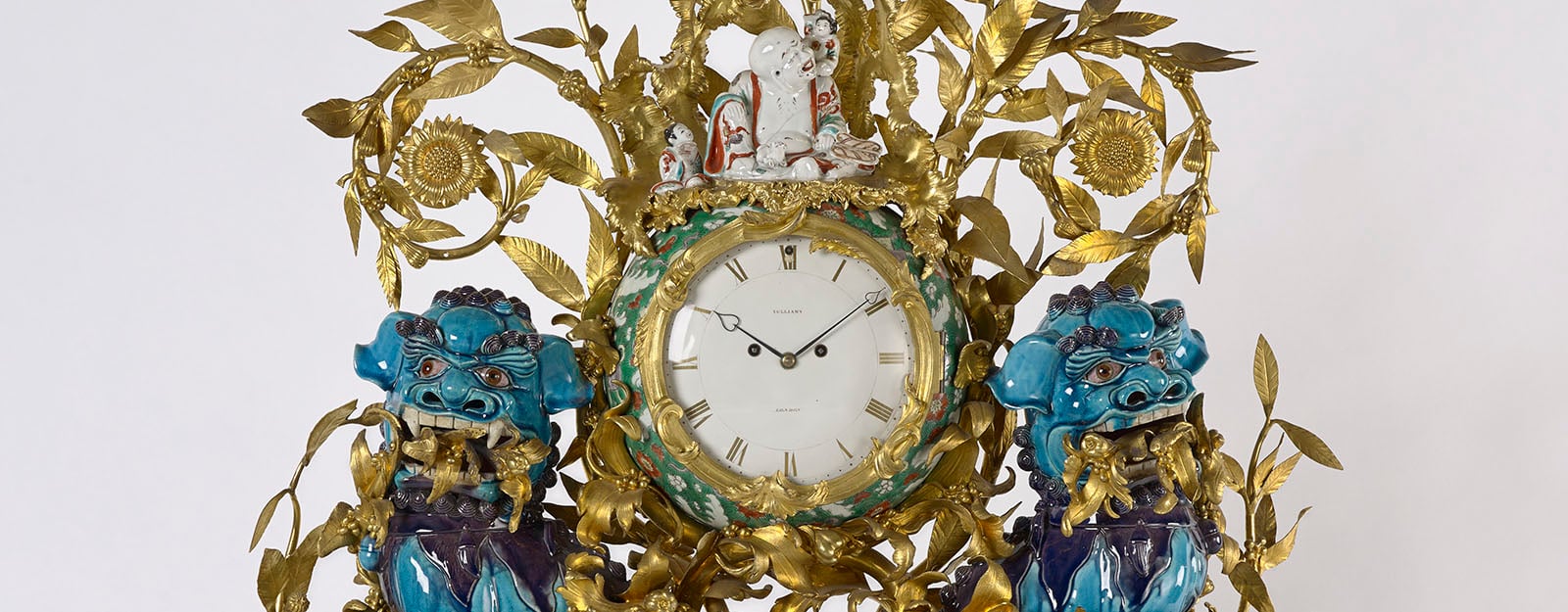
A Prince's Treasure
120 objects from the Royal Collection return to the Royal Pavilion in Brighton
Pair of bottle vases mounted as eight-light candelabra
vases: 1780-1810, mounts: early 19th centuryPorcelain with light celadon glaze painted in famille rose enamels and gilt, with gilt bronze | 116.0 x 47.0 x 51.0 cm (whole object) | RCIN 2736
The vase is from the late eighteenth century or early nineteenth century. The gilt bronze mounts are by Samuel Parker and made in 1822.
They were destined for the mantelpiece of the chinoiserie fireplace in the Saloon at the Royal Pavilion, Brighton, with its inset mandarin figures, which was produced to Robert Jones’s design in 1816–23, and they are portrayed there in Pugin’s watercolour of 1823–4, flanking the so-called ‘Kylin’ clock (RCIN 2867). Samuel Parker’s invoice of 30 April 1822 notes: ‘A Magnificent sett of Ornaments gilt for chimney as per Estimate [£]840.0.0’; to this was added ‘For 2 Extra Vases 11 Inches [27.9 cm] Diameter by 16 In. [40.6 cm] high to Support the grand Candelabras’, as well as sundry decorative elements, additional to the original estimate. These extra items totalled £82 10s, and the full amount invoiced, which included his work on the chimneypiece, was £922 10s (Royal Archives GEO/MAIN/25372). Jones’s invoice of 27 June 1823 included ‘Designs for the Oriental Candelabra, which stand on the Chimneypiece, and appropriating China jars, and arranging by imitation other Jars, to connect and correspond, with the Design and Ornamental Colouring of the Porcelain Jars’, £162 (National Archives LC 11/41). The work was carried out by Samuel Parker, whom John Nash had recommended in 1822 as a cheaper alternative to Benjamin Lewis Vulliamy. The candelabra, metal stands and accompanying figures are described in the Inventory as having ‘cut glass prismatic top ornaments (1829B, p. 9 at the back) which have not survived.
Text adapted from Chinese and Japanese Works of Art in the Collection of Her Majesty The Queen: Volume II.







